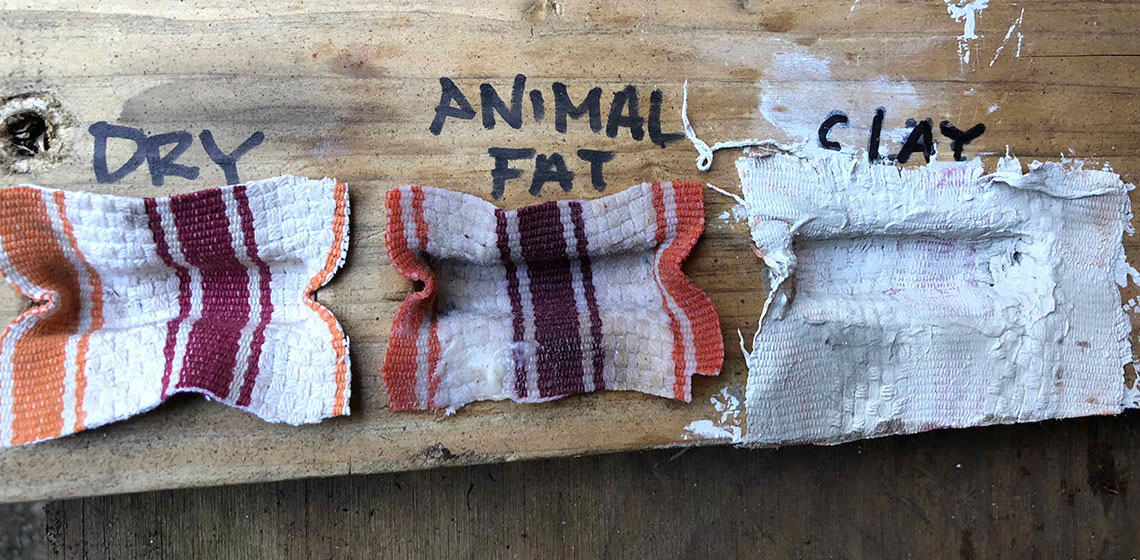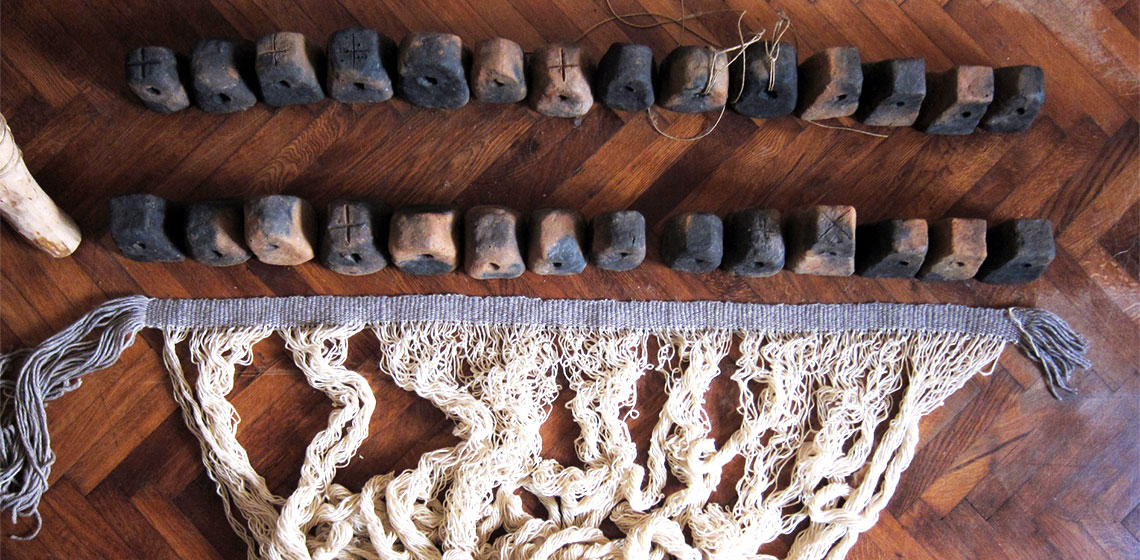textile
Replication of a Maori Ethnographic Textile Hem Border Pattern
Publication Date
11th EAC Trento 2019
***Replication of archaeological and ethnographic Māori textiles, under the direction of customary knowledge and previous practical experience, can provide a more nuanced understanding of the manufacture of taonga (treasures) made from fibre materials. A case study is presented here from the unique perspective of a weaver who...
***Replication of archaeological and ethnographic Māori textiles, under the direction of customary knowledge and previous practical experience, can provide a more nuanced understanding of the manufacture of taonga (treasures) made from fibre materials. A case study is presented here from the unique perspective of a weaver who...
The Contribution of Experimental Archaeology in Addressing the Analysis of Residues on Spindle-Whorls
Publication Date
11th EAC Trento 2019
***This contribution focuses on residues developing on spindle-whorls during spinning. Such a kind of tools is largely diffused in archaeological contexts where spindle-whorls were used in textile activities or deposited in burials as grave goods. Scholars recently approached the analysis of these objects through experimental archaeology to better understand their wide variation in size and shape especially in relationship with the adoption of...
***This contribution focuses on residues developing on spindle-whorls during spinning. Such a kind of tools is largely diffused in archaeological contexts where spindle-whorls were used in textile activities or deposited in burials as grave goods. Scholars recently approached the analysis of these objects through experimental archaeology to better understand their wide variation in size and shape especially in relationship with the adoption of...
Book Review: A Handbook for Men's Clothing of the Late 15th Century by Anna Malmborg & Willhelm Schütz
Publication Date
Although there is a wide variety of publications about costume history and of single archaeological sites with textile remains of period clothing, the number of books that interdisciplinarily cover the fashion of past eras in the context of different source categories is, frankly, really small. Some attempts to draw a complete image of medieval fashion simply fail just because of the scale of it; others try to...
Book Review: A Handbook for Women's Clothing of the Late 15th Century by Anna Malmborg & Willhelm Schütz
Publication Date
Medieval re-enactment, especially late 15th century, has become increasingly popular during the past 15-20 years and it seems like the growth will not stop anytime soon (unless the Viking re-enactment takes over as a consequence of the popular culture and mainstream focus – but that is another discussion). The book is part of a series ''Historical Clothing From the Inside Out'' from different historical periods...
Textile Textured Silver Ingots: A Technical Investigation into how these Textures came to be on some Viking Hoard Ingots
Publication Date
The ‘West Coast Cumbria’ hoard, discovered in 2014, is a late ninth/ early tenth-century Viking silver hoard, housed at the Beacon Museum, Whitehaven, UK. It is composed of 20 Viking silver objects: bar-shaped ingots and ornaments, in various stages of fragmentation (PAS ‘Find-ID’ LANCUM-FA14C8). One, complete ingot (museum no. 2016.162.5) bears coarse cloth-impressions on its upper surface...
Prehistoric Dressing for Third Millennium Visitors. The Reconstruction of Clothing for an Exhibition in the Liptov Museum in Ruzomberok (Slovakia)
Publication Date
There can be various reasons for reconstructing clothing for museum purposes. The most frequent one, as in the case of this paper, is to improve and liven up an exhibition with 3D models (Hendszel et al., 2008), which present the fashion culture of individual periods, nationalities or specific regional features to the general public...
Some Uses of Experiment for Understanding Early Knitting and Erasmus' Bonnet
Publication Date
10th EAC Leiden 2017
***Of Erasmus, prince of humanists (1466?-1536), no less than eight portraits from life survive – all eight in the exact same bonnet. A recently published investigation of this iconic garment (Kruseman, Sturtewagen and Malcolm-Davies, 2016) involved establishing a 250-year typology of the bonnet from iconographical sources, compiling technological and economic data from archival sources, and systematic experiments addressing numerous, various and fundamental questions, from yarn characteristics in archaeological knitted textiles to the use (or not) of hatter's forms in the finishing of bonnets.
***Of Erasmus, prince of humanists (1466?-1536), no less than eight portraits from life survive – all eight in the exact same bonnet. A recently published investigation of this iconic garment (Kruseman, Sturtewagen and Malcolm-Davies, 2016) involved establishing a 250-year typology of the bonnet from iconographical sources, compiling technological and economic data from archival sources, and systematic experiments addressing numerous, various and fundamental questions, from yarn characteristics in archaeological knitted textiles to the use (or not) of hatter's forms in the finishing of bonnets.
Understanding the Archaeological Record: Reconstructing a Warp-Weighted Loom
Publication Date
10th EAC Leiden 2017
***The paper deals with a reconstruction of a warp-weighted loom based on a rare find of 36 in situ loom weights in an object interpreted as a weaving hut at an archaeological site Virje-Sušine in Northern Croatia dated in late Iron Age (La Tène C period, 2/2 3rd – 2/2 2nd century BC)...
***The paper deals with a reconstruction of a warp-weighted loom based on a rare find of 36 in situ loom weights in an object interpreted as a weaving hut at an archaeological site Virje-Sušine in Northern Croatia dated in late Iron Age (La Tène C period, 2/2 3rd – 2/2 2nd century BC)...
Conference Review: European Textile Forum 2017
Publication Date
The eighth European Textile Forum took place 6-12th November 2017, organised by Katrin Kania and Sabine Ringenberg. It was held at its adopted home LEA (Labor für Expermentelle Archäologie) in Mayen, Germany, a satellite of the RGZM (Römisch-Germanisches Zentralmuseum) at Mainz, by invitation of LEA director Michael Herdick...
Book Review: Dressing Prehistory (Oblekani Praveku) by K. Urbanová and J. T. Pulpán
Publication Date
A unique popular education publication called Oblékání pravěku (Dressing prehistory) has appeared on the Czech book market. It is a work by archaeologist Kristýna Urbanová, and Jan T. Půlpán, an experienced experimenter. At first glance the book attracts attention with an unusually large format, well chosen because of the foundation elements of the publication – colour photographs...










